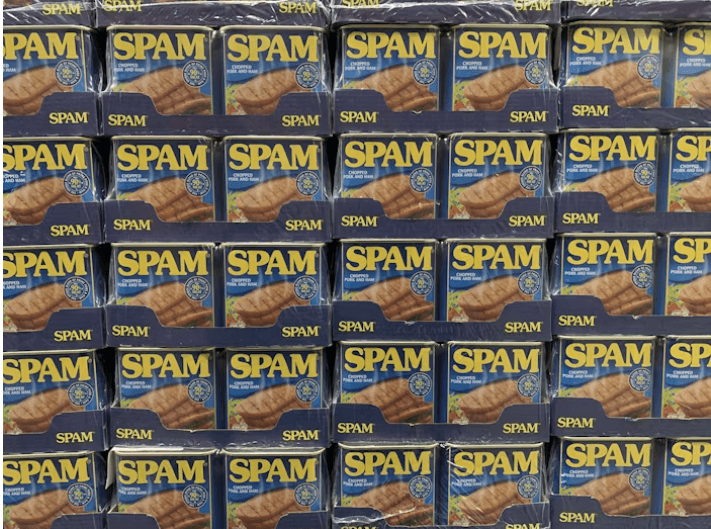Understanding Gmail Spam Alerts in 2024 – What They Mean and How to Solve Them

Tony Baltodano
Sep 26, 2024
Understanding Gmail Spam Alerts in 2024 – What They Mean and How to Solve Them
Gmail spam alerts aren’t just warnings; they’re powerful signals showing where your email strategy needs work. If you’re serious about staying out of the spam folder and maintaining a strong domain reputation, you need to decode these alerts and address them head-on. Each alert is like a diagnostic tool for your email strategy, pinpointing what’s broken and how to fix it. Let’s break down what these alerts mean and provide actionable steps to tackle them.
1. "Messages Like These Have Been Identified as Spam in the Past"
When Gmail throws this alert, it’s telling you: “We’ve seen this kind of content before, and it’s been flagged as spam.” If your emails look like spam, feel like spam, or sound like spam, Gmail will think it is spam.
Why This Happens:
Your email content is repetitive or closely resembles spammy content seen before.
Spam-trigger phrases like "FREE," "LIMITED TIME OFFER," and "CLICK HERE NOW" are major offenders.
How to Fix It:
Avoid Common Spam Triggers: Your content needs to feel fresh and genuine. Conduct A/B tests to identify what works and what doesn't. Tools like MailReach and GlockApps can be used to check how your emails are landing—whether in the inbox or the spam folder.
Revise Your Subject Lines: Keep your subject lines relevant and personalized. Incorporate elements like the recipient's name, company, or recent activity. Avoid clickbait and overly promotional language. Instead, aim to provoke curiosity or provide immediate value.
2. "Emails from This Address Have Been Marked as Spam"
This alert indicates that your email address is developing a negative reputation because recipients are flagging your emails as spam. It's a sign that your approach needs a reset.
Why This Happens:
Your engagement rates are low, meaning recipients are ignoring or deleting your emails.
The content you’re sending is low-value or irrelevant, causing frustration among recipients.
How to Fix It:
Revamp Your Content Strategy: Change your content style and experiment with different formats. Focus on delivering high-value, engaging content that resonates with your audience. Consistency without evolution is a path to the spam folder.
Monitor Engagement Metrics Beyond Opens: Shift your focus from open rates to more meaningful metrics like reply rates and click-through rates. This shift will help you understand what truly drives engagement and allows you to refine your strategy accordingly.
3. "Messages from This Sender Have Been Identified as Spam in the Past"
This is a serious alert that impacts your entire sender reputation. It means Gmail considers everything from your domain as spam.
Why This Happens:
High spam complaints across multiple campaigns.
A damaged sender reputation affecting your entire domain.
How to Fix It:
Conduct a Comprehensive Audit: Review your sending practices, domain reputation, and email lists. Use tools like MailReach and GlockApps to diagnose specific problems and address them swiftly.
Consider a Domain Change: If your domain’s reputation is beyond repair, you might need to switch to a new domain. However, if you don’t address the underlying issues, a new domain will suffer the same fate.
4. "This Message Seems Dangerous"
This alert often indicates potential phishing or impersonation attempts. Gmail raises these flags to protect users from malicious content.
Why This Happens:
Your domain closely resembles another legitimate domain.
Lack of proper email authentication (SPF, DKIM, DMARC).
How to Fix It:
Implement Proper Email Authentication: Make sure you're using SPF, DKIM, and DMARC to authenticate your emails. This prevents them from being flagged as phishing attempts.
Avoid Similar-Looking Domains: Ensure your domain is distinct and cannot be confused with others. Misleading domain names can lead to a higher likelihood of being flagged.
5. Bounce Notifications: Soft vs. Hard Bounces
Bounce notifications are direct indicators that your emails aren't reaching their intended recipients. Understanding the difference between soft and hard bounces is crucial for list hygiene and reputation management.
Soft Bounces:
Description: Temporary delivery issues like full inboxes or server problems.
Alerts to Look For: Notifications like "Temporary Failure" or "Mailbox Full."
How to Manage Soft Bounces: Retry sending after some time, but keep an eye on these addresses. Persistent soft bounces can eventually turn into hard bounces.
Hard Bounces:
Description: Permanent delivery failures due to invalid or non-existent email addresses.
Alerts to Look For: Notifications like "Permanent Failure" or "Address Does Not Exist."
How to Manage Hard Bounces: Regularly clean your email lists using tools like Emailable. Verifying your lists at least twice can help maintain a healthy sender reputation by removing invalid addresses.
6. "Images in This Message Are Hidden"
This alert is increasingly common as privacy measures against tracking pixels tighten. It’s a signal that open rates are becoming less reliable as an engagement metric.
Why This Happens:
Over-reliance on tracking pixels for measuring engagement.
How to Fix It:
Shift Focus from Open Rates: Open rates are increasingly considered a vanity metric. Prioritize more meaningful engagement metrics like reply rates and clicks. Disabling open tracking can help reduce the risk of emails being flagged.
7. How to Monitor and Resolve Spam Alerts Effectively
Utilize Advanced Tools: Regular monitoring tools like MailReach, GlockApps, and Spamcheck are essential for staying ahead of potential issues. These tools help you gauge spam placement and sender reputation effectively.
Conduct Regular Audits: Regularly review your email lists and sending practices. A clean list, robust infrastructure, and well-thought-out content strategy are crucial for maintaining high deliverability.
8. Preventative Measures to Avoid Spam Alerts
Gradual Domain and Mailbox Warm-Up: Slowly warming up your domains and mailboxes helps establish a strong sender reputation. A gradual ramp-up strategy is critical to avoiding suspicion from email service providers.
Segment and Personalize: Proper list segmentation and personalized outreach reduce spam complaints and enhance engagement.
Act Now, Not Later
Ignoring these alerts is like ignoring a leak in your boat. You might stay afloat for a while, but eventually, you’re going under. Whether it’s refreshing your content, segmenting your lists better, or using advanced tools to diagnose and solve deliverability issues—take action now. The longer you wait, the harder it will be to repair your reputation.
Check out the video I made about this topic here.
Ready to Solve Your Deliverability Issues for Good?
Getting your emails seen is about more than just hitting “send.” Shared IPs and generic setups won’t cut it when you’re serious about scaling. You need control, real-time insights, and expert guidance to stay ahead.
That’s Where Mission Inbox Comes In.
At Mission Inbox, we take email deliverability seriously. With dedicated IPs, real-time monitoring, and hands-on support from dedicated managers, you’ll have everything you need to dominate the inbox.
Claim Your Free Trial Today!
Don’t gamble with your email strategy. Join top-performing teams who trust Mission Inbox to manage their deliverability. Sign up for your 21-day free trial now and start sending smarter. Visit Mission Inbox to get started. Take control, optimize your outreach, and achieve real results.
Convinced? Elevate Your Email Strategy!
Related posts
The Demise of Email Open Tracking: Navigating Gmail's 2024 Policy Changes, in 2025
Gmail's 2024 policy shift has disrupted traditional email tracking, but are your email strategies still stuck in the past? Discover how to adapt your approach in 2025 with targeted tips for marketing and cold outreach, boost engagement, protect your sender reputation, and thrive in the evolving inbox landscape.

Ese Taverho
How Failed SPF and DKIM Break Your Cold Outreach (And How to Fix It Fast)
In this guide, you’ll learn exactly what SPF and DKIM do, why missing or broken records tank your deliverability, and step-by-step instructions to fix them in minutes. Say goodbye to unopened campaigns and hello to inbox placement—so your next cold email actually gets read.

Ese Taverho
Deliverability vs Delivered: Why Your 98% ‘Success Rate’ Might Be Lying
If your email tool is bragging about a 98% delivery rate, hold the celebration — because that number doesn’t mean what you think it does. Most email platforms are only measuring delivery, not deliverability. And there's a big difference.

Ese Taverho



